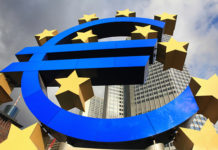Markets
Asian stocks showed resilience this morning with China and South Korea even closing in green as the virus isn’t the dominant factor for regional markets anymore. This clearly contrasts with the US and even more so with Europe. Virus curves are rising at an ever accelerating pace. European governments are rushing to step up measures to reduce social contacts, which are coming ever closer to a full-scale lockdown. The question shifts from whether or not a double dip will occur to how deep the second hit will be and how long it will last. Markets are repositioning to cope with this highly uncertain environment. European markets are falling prey to an outright risk-off move. Equity indices are losing 3+% with the likes of the Eurostoxx 50 piercing key support levels (3054/21 area). Losses on US markets are less, but still big with US indices ceding 2%+.The Vix volatility index jumped to 40. (Some) constructive corporate earnings didn’t help to stop the bleeding. The sell-off in risky assets supported core bonds, but gains could have been bigger. US yields decline about 1bp across the curve. Germany still outperforms with yields declining between 1.4 bps (2y) and 2.5 bps (30y). Still, the 10y-yield is signaling red alert, testing the post-March low near -0.64%! Strong market belief in the ECB’s commitment to guarantee intra-EMU financial stability recently shielded intra-EMU bond spreads from risk-off corrections. However, this time peripheral bonds don’t escape the sell-off with spreads for the likes of Italy and Greece widening 7 to 13 bps respectively. In a broader perspective, absolute yield levels stay near historic lows. Brent oil dropped below $40 p/b and is nearing the $38.80 range bottom.
The dollar, the yen and to a lesser extent the Swiss franc attract safe have flows. USD/JPY hovered slideways in the lower half of the 104 big figure (currently 104.35 area). EUR/CHF is drifting below the 1.07 barrier. EUR/USD trended south in the 1.17 big figure throughout the morning session but stabilized later (currently 1.1735). First intermediate support at 1.1689 wasn’t challenged yet. The risk-off also hit the smaller, less liquid currencies. EUR/PLN broke 4.60 resistance with the pair testing the 4.635 March top. EUR/HUF (367) is nearing the all-time top just below 370. The loss in the Czech korona is a bit more modest (EURCZK 27.42). The decline in the CE currencies is both due to global negative market sentiment and at a sharp rise in regional inflections. Markets ponder the dilemma for regional Central Banks between providing necessary support for the economy and limiting losses of their currencies. Even smaller currencies of more mature economies with strong fundamentals like the Swedish krona (EUR/SEK 10.365) and the Norwegian krone (EUR/NOK 10.97) suffered a material loss. The risk-off initially also weighed on sterling with EUR/GBP returning higher in the 0.90 big figure. However, the UK currency rebounded this afternoon on headlines of brexit progress on topics of state aid and on the level playing field, reportedly coming from ‘sources familiar with the negotiations’. EUR/GBP is currently trading in the 0.9040 area.
News Headlines
South Africa projects a larger economic contraction for 2020 of 7.8% compared to four months ago, followed by a 3.3% and 1.7% expansion in the years after. This year’s budget deficit is estimated at -15.7% and should decline to -7.3% in 2023/24 with the focus on reduced spending. Debt will peak from 81.8% this year to 95.3% in 2025/26. The South African rand declines to USD/ZAR 16.34 though trades off intraday lows set after the budget presentation.
The Bank of Canada kept policy rates stable at the effective lower bound of 0.25%. It recalibrated its purchasing programme by reducing the amount to $4bn/week but targeting longer-term bonds. Growth is expected to slow significantly in Q4 due in part to rising Covid-19 cases. Inflation will remain below target throughout the policy horizon. The current policy rate will remain in place until economic slack is absorbed. In the current forecasts, that does not happen until 2023.















